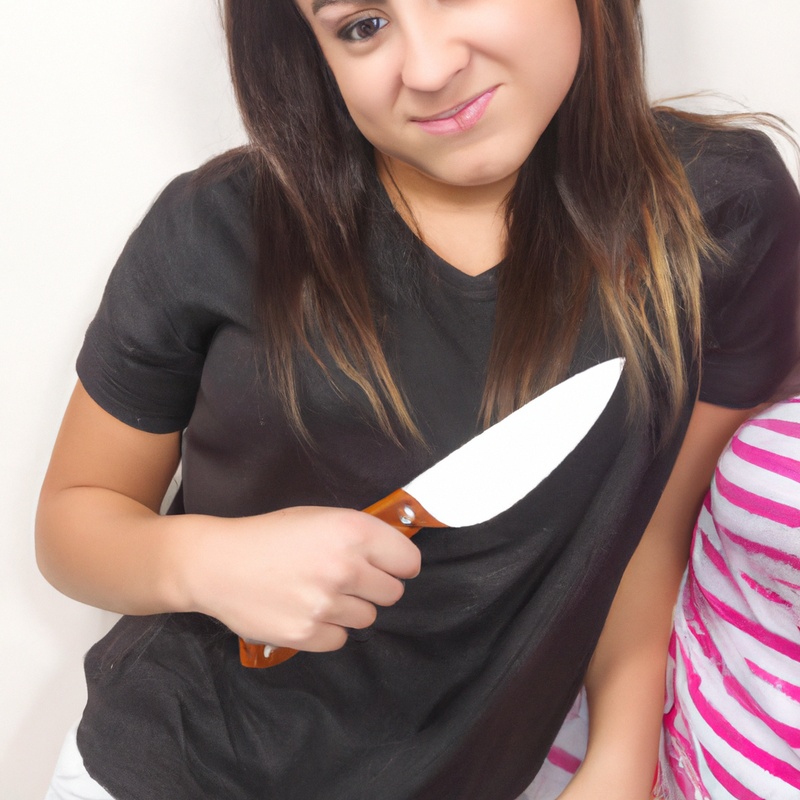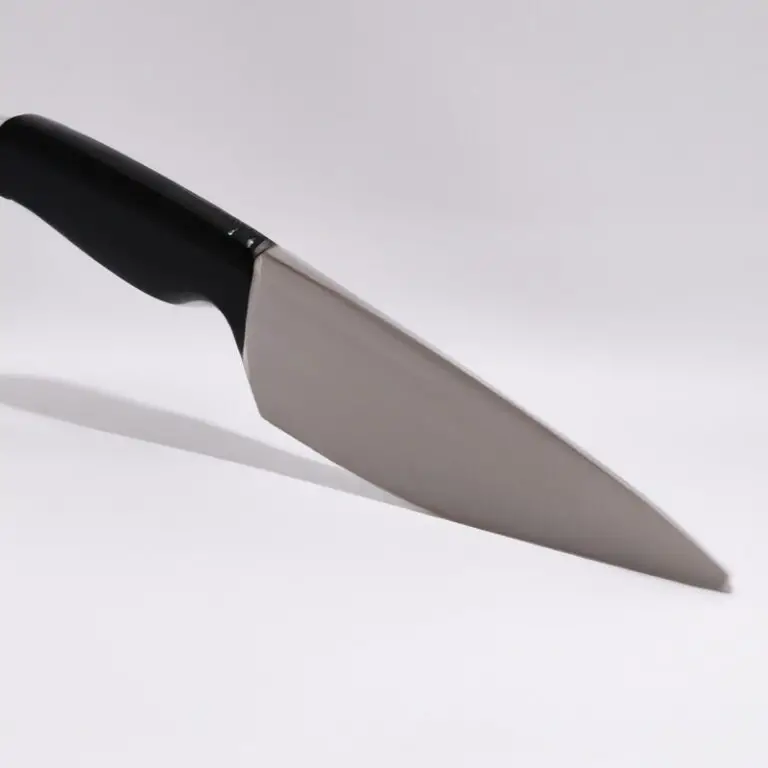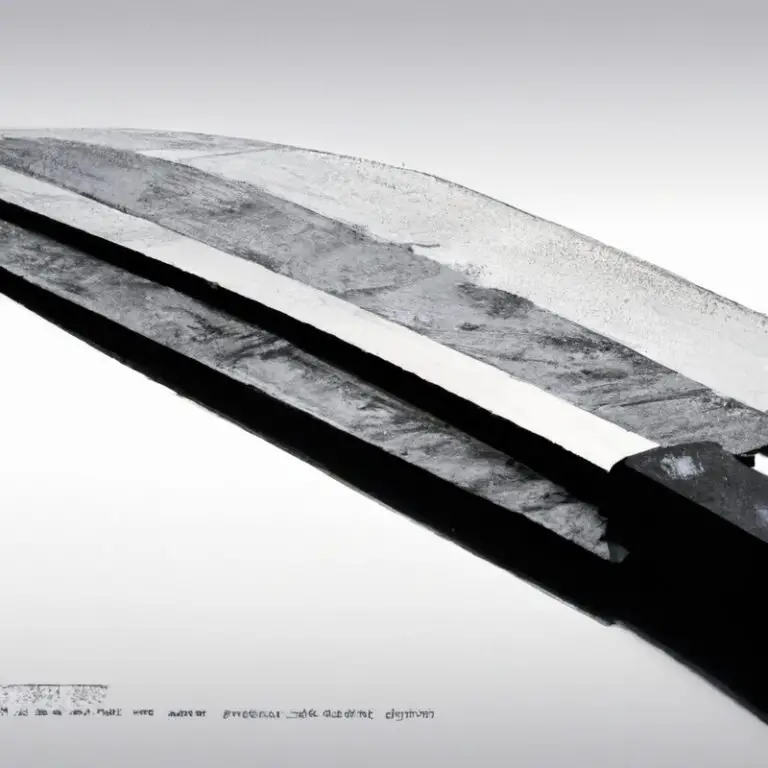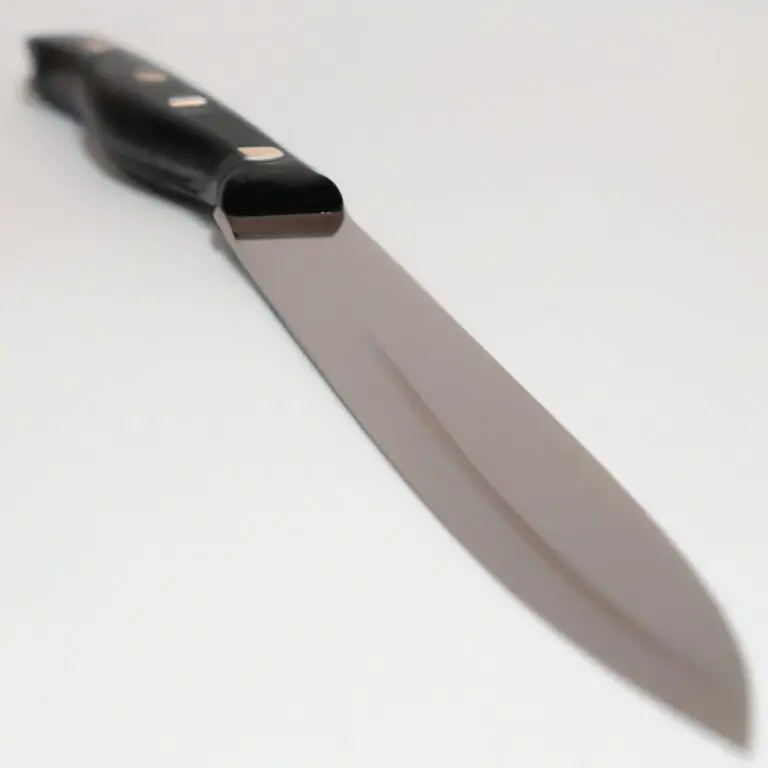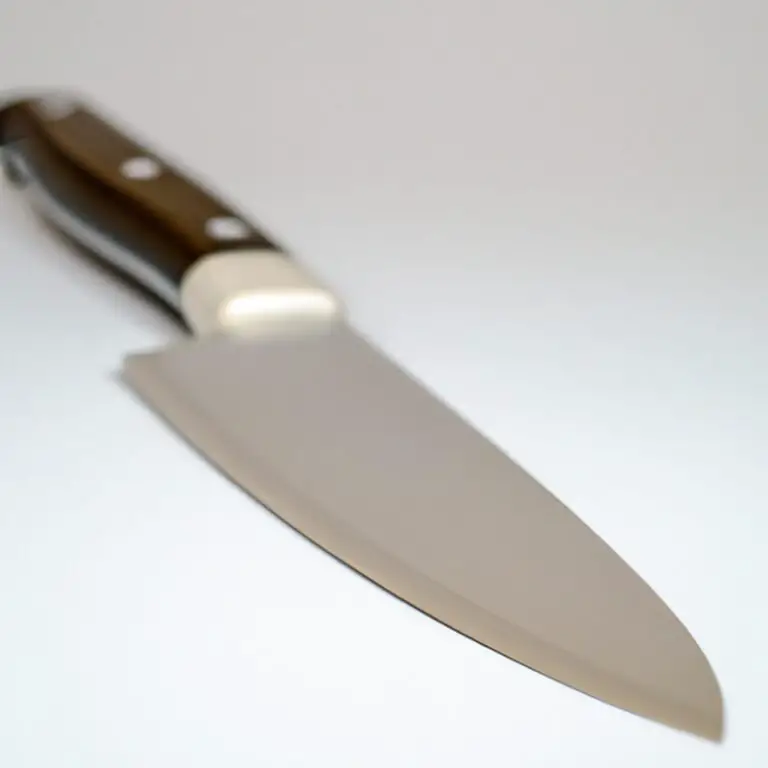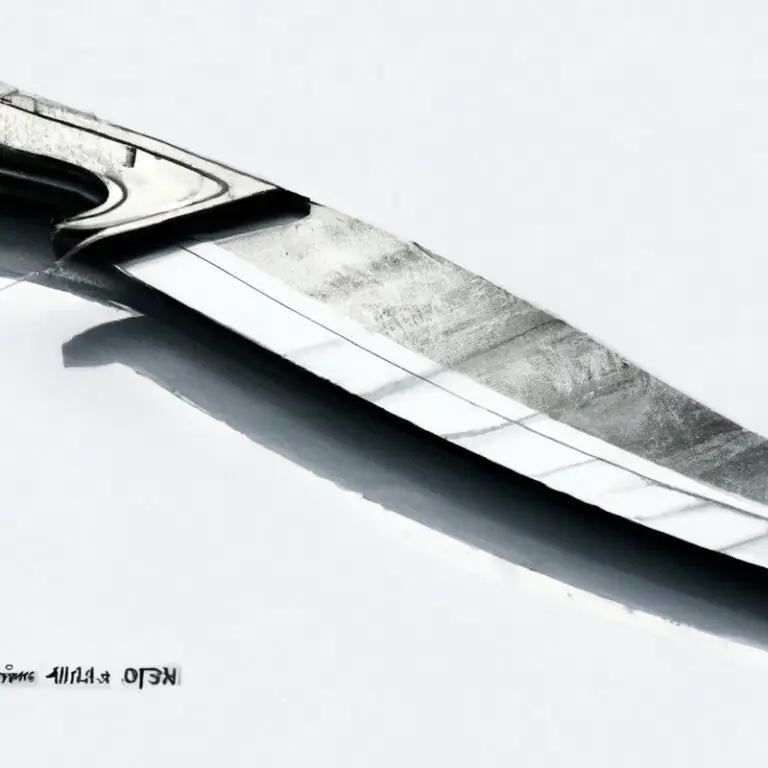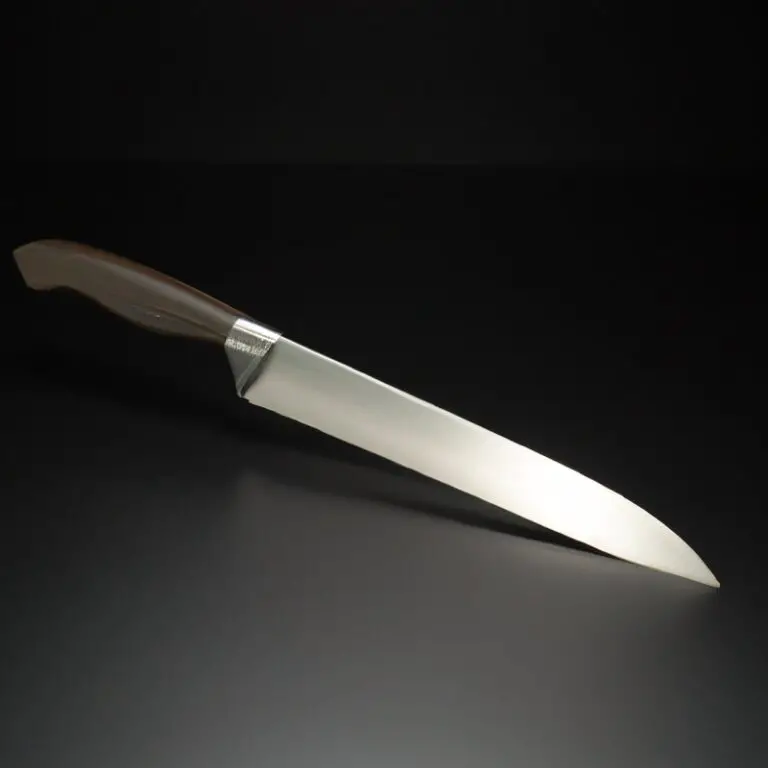How To Prevent Food From Sticking To a Chef Knife Blade?
Key Takeaways:
- Keep the chef knife blade clean and dry to prevent food from sticking.
- Use a honing rod or sharpening stone regularly to maintain the sharpness of the blade.
- Apply a thin layer of oil or non-stick cooking spray on the blade before use.
- Use a slicing motion instead of a chopping motion to minimize contact between the blade and the food.
Have you ever felt frustrated while preparing a meal because your ingredients keep sticking to your chef knife blade? It’s a common problem that can affect even the most skilled chefs.
Fortunately, there are effective techniques and tools you can use to prevent food from sticking to your knife, making your cooking experience much smoother and enjoyable.
In this article, I’ll share some tips and tricks that will help you preserve your knife’s sharpness and avoid the messiness of food sticking to your blade. Whether you’re a professional chef or a home cook, these tips will take your culinary skills to the next level.
| Method | Description |
|---|---|
| Use a non-stick knife | This type of knife has been coated with a non-stick material that prevents food from sticking to the blade. |
| Apply oil to the blade | Coating the blade with a small amount of oil can prevent food from sticking. |
| Use a damp towel | Wiping the blade with a damp towel before cutting can help prevent food from sticking. |
| Use a honing steel regularly | Keeping the blade sharp can help prevent food from sticking. |
| Cut slowly and evenly | Applying consistent pressure and cutting at a moderate speed can help prevent food from sticking. |
Factors contributing to food sticking to a chef knife blade
There are several factors that contribute to food sticking to a chef knife blade. The first factor is the dullness of the knife.
A dull knife will crush food instead of slicing through it, making it more likely to stick to the blade.
The second factor is the type of food being cut. Foods that are sticky or have a high water content, such as potatoes or tomatoes, are more likely to stick to the blade.
The third factor is the technique used when cutting.
For example, using a sawing motion instead of a slicing motion can cause food to stick to the blade. Finally, the cleanliness of the knife can also affect how easily food sticks to it.
A dirty or greasy knife will attract food particles and make them more likely to stick.
By understanding these factors, you can take steps to prevent food from sticking to your chef knife and improve your overall cooking experience.
Importance of keeping your knife sharp to prevent food sticking
Keeping your knife sharp is essential to prevent food from sticking to the blade. A dull knife results in crushed food, making it prone to sticking, which can slow down your cooking process and damage the presentation of your meals.
Moreover, a sharp knife can help ensure precision cutting, which reduces the risk of over-chopping and the subsequent release of juices, further reducing food sticking.
Therefore, investing in a high-quality knife sharpener or having a professional sharpen your knives is essential for keeping your knives in optimum condition and preventing food from sticking. Remember, a sharp knife is a chef’s best friend.
Techniques for prepping food to avoid sticking on the blade
Properly prepping food can prevent it from sticking to the chef knife blade. Here are some techniques you can use:
- Dry the food: Before cutting, dry the food thoroughly to remove any excess moisture, which can cause it to stick to the blade.
- Use a sharp knife: A dull knife can damage the food, making it more likely to stick to the blade. A sharp knife will cut the food cleanly and without crushing it.
- Secure the food: Hold the food steady while cutting to prevent it from moving around and sticking to the blade.
- Use a rocking motion: When cutting, use a gentle back-and-forth rocking motion instead of a straight pushing motion to avoid the food sticking to the blade.
- Cut against the grain: Cut meat and vegetables against the grain to prevent the fibers from sticking to the blade.
- Use a slicing motion: Use a slicing motion for softer foods like tomatoes to avoid crushing them and creating more moisture.
By following these techniques, you can prevent food from sticking to the chef knife blade, ensuring a smooth and efficient cutting process.
Tips for selecting the right knife for the task to prevent food from sticking
When selecting the right knife for a specific task, there are a few factors to consider that can help prevent food from sticking.
- Blade shape: A thinner and narrower blade works well for precision tasks like peeling and trimming, whereas a wider blade is better for chopping and slicing.
- Blade material: Stainless steel blades and ceramic blades are less likely to rust and are easier to clean, making them a good choice for preventing food from sticking.
- Blade coating: Non-stick coatings on knives, such as ceramic or Teflon, can help prevent food from sticking.
- Handle: A comfortable handle that fits well in your hand can give you more control and allow for smoother cutting, reducing the likelihood of food sticking.
- Knife size: Choosing the right size knife for the task at hand can make a significant difference in preventing food from sticking. As a general rule, a larger knife works better for larger items, and a smaller knife is better for smaller items.
By considering these factors when selecting a knife, you can minimize the likelihood of food sticking to the blade and make your kitchen tasks easier and more efficient.
The benefits of using lubricants to minimize food sticking on a chef knife
Using lubricants is an effective way to minimize food sticking on a chef knife blade. Lubricants, such as food-grade oils and sprays, create a barrier between the food and the blade, reducing friction and allowing for smoother and easier cutting.
Using lubricants can also extend the life of your knife by preventing residue buildup and corrosion.
It is important to choose a food-safe lubricant and apply it sparingly, avoiding the handle and bolster of the knife to maintain a firm grip. Overall, using lubricants is a simple and effective technique for preventing food from sticking to your chef knife blade.
How to properly clean and maintain a knife to prevent food from sticking
Proper maintenance of a chef knife is essential to prevent food from sticking to the blade. Follow these simple steps for cleaning and maintaining your knife:
- Hand wash your knife with warm, soapy water after each use. Do not put it in the dishwasher as the high heat and harsh detergents can damage the blade.
- Dry your knife thoroughly with a clean towel before storing it in a knife block or sheath. Moisture left on the blade can cause rust and corrosion, which can lead to food sticking.
- Sharpen your knife regularly using a sharpening stone or honing steel. A dull blade can cause more tearing and crushing of food, leading to it sticking on the blade.
- Avoid cutting on hard surfaces like glass or metal as it can damage the blade and cause nicks, which can also lead to food sticking. Instead, use a wooden or plastic cutting board.
By following these tips for proper cleaning and maintenance of your knife, you can ensure it remains sharp and free from any debris that may cause food to stick to it.
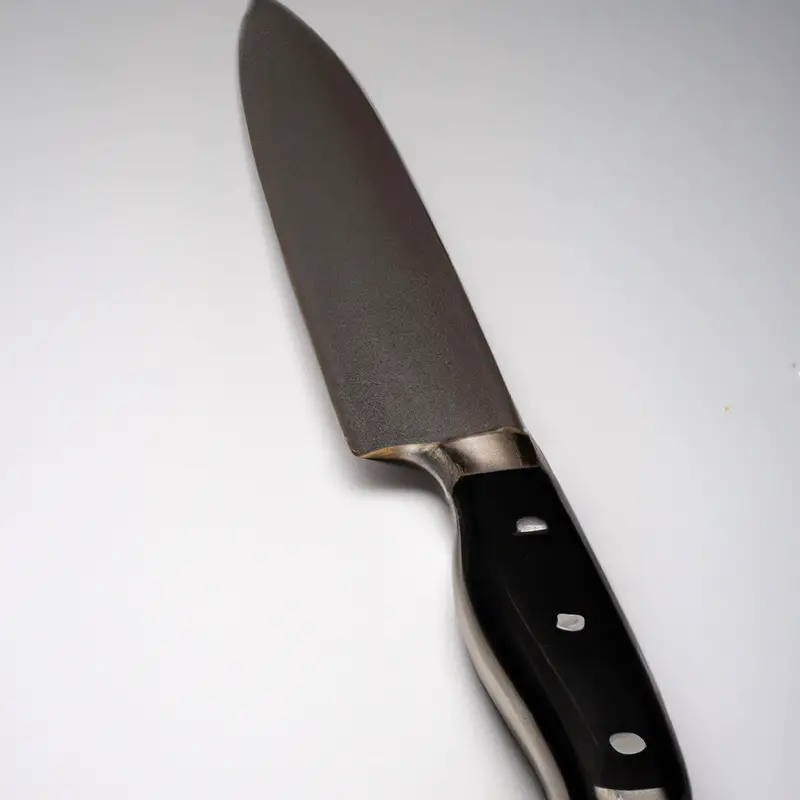
The proper cutting technique to prevent food from sticking on the knife
To prevent food from sticking to your chef knife, it is essential to use the proper cutting technique. The key is to use a fluid, continuous motion when slicing through the food, rather than a stop-and-go approach.
This means that once you begin cutting, you should continue the motion until you complete the cut, rather than repeatedly lifting the knife off the food.
In addition, it is important to apply even pressure throughout the cut. Uneven pressure can cause the knife to twist or bend, which can leave food sticking to the blade.
When cutting through meats or hard vegetables, it’s best to use a sawing motion to prevent sticking.
It’s also important to pay attention to the angle of the blade. For most cuts, a 20-degree angle is recommended.
This allows for an efficient cut while minimizing the surface area where food can stick.
Finally, ensure that your knife is sharp before use. A dull blade can smash food instead of cleanly cutting it, causing it to stick to the blade.
With the proper technique and a well-maintained knife, you can prevent food from sticking and improve your overall cooking experience.
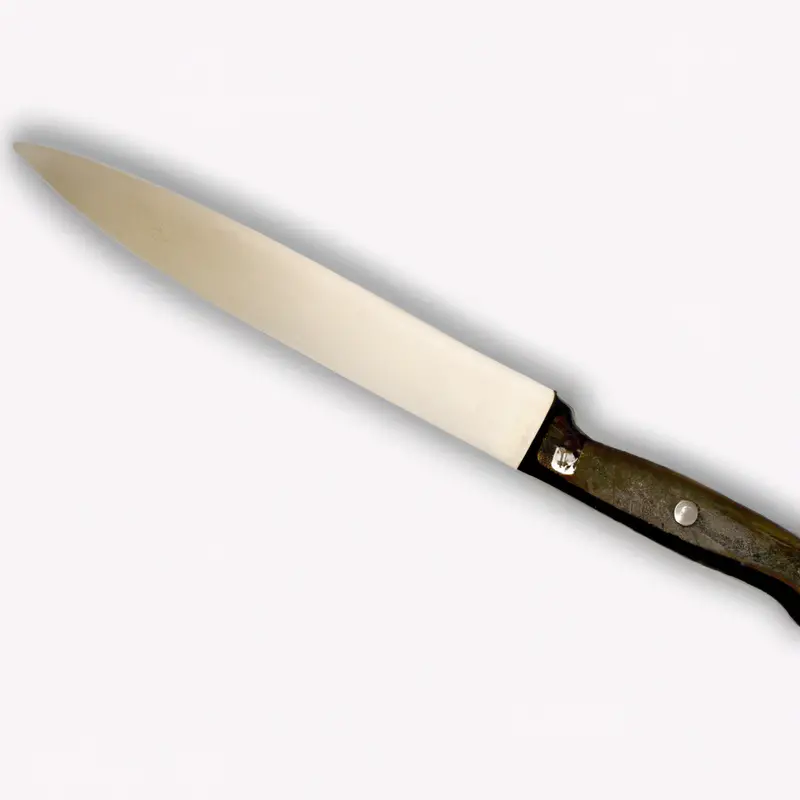
The importance of using the correct angle when cutting to prevent food sticking
Using the correct angle when cutting is crucial to prevent food from sticking to a chef knife blade. A steep angle can cause the knife to wedge into the food, leading to more surface area contact and more sticking.
On the other hand, a shallow angle can result in a dull and ineffective cut.
The ideal angle for cutting food depends on the type of food being prepared. For example, a thirty-degree angle is suitable for cutting hard vegetables like carrots and potatoes.
In contrast, a seventeen to twenty-degree angle is ideal for slicing through soft and delicate ingredients like fish and herbs.
Professional chefs recommend holding the knife at a consistent angle and using a smooth slicing motion to achieve the best results. This technique reduces the amount of pushing and crushing of the food, which helps to minimize sticking.
Using the correct angle when cutting not only prevents food from sticking but also enhances the efficiency of the cutting process.
It ensures cleaner cuts, reduces the risk of injury, and preserves the sharpness of the knife blade. Therefore it is essential to take the time to understand the proper cutting angle and technique to achieve the best performance when preparing food.
The benefits of using a non-stick coating on your knives to prevent food sticking
Using a non-stick coating on your knives can provide numerous benefits when it comes to preventing food sticking. One significant advantage of a non-stick coating is that it reduces the amount of food that sticks to the blade.
This, in turn, makes it easier and faster to chop, dice, slice, or mince food.
With a non-stick coating, meats, vegetables, and fruits will slide effortlessly off the knife, resulting in less food waste and better-looking dishes. Another advantage of non-stick coatings is that they can improve hygiene in the kitchen.
Because food doesn’t stick to the blade, the likelihood of bacteria growth on the surface of the knife is significantly reduced, ensuring that the food is safe and healthy to eat.
Non-stick coatings also make it easier to clean your knives. When food sticks to the blade, it creates additional grooves and pits to trap food debris, which makes cleaning more difficult.
However, with a non-stick coating, cleaning is much more manageable because no food debris is left on the blade.
Using a non-stick coating on your knives provides numerous benefits. It reduces food waste, improves hygiene, and makes cleaning easier.
If you’re looking to prevent food sticking to your chef knife, consider investing in a non-stick coated knife to improve your cooking experience.
Common mistakes to avoid when using a chef knife to prevent food sticking
When it comes to using a chef knife, there are several common mistakes to avoid that can lead to food sticking to the blade. One of the most common mistakes is using a dull knife, as it can cause uneven cuts and require more pressure to cut through food, leading to food sticking on the blade.
It is also important to use the correct cutting technique, a slow and steady motion, rather than a hacking motion.
Using too much pressure or a sawing action can also increase the likelihood of food sticking to the knife. Another common mistake is not properly cleaning and maintaining the knife.
A dirty or rusty knife can cause food to stick to the blade and even lead to contamination.
It is crucial to wash the knife after each use and dry it thoroughly before storing it. Using the wrong type of knife for the task can also lead to food sticking on the blade.
For example, using a serrated knife for slicing vegetables can result in a jagged cut that causes food to stick.
It is important to choose the right knife for the specific task to ensure a clean and even slice. Lastly, using a non-stick coating on the knife may seem like a solution, but it can actually lead to more sticking.
The coating can wear off over time and make the surface uneven, causing food to stick.
It is best to stick to a high-quality stainless steel knife and maintain it properly to prevent food from sticking.
Final Verdict
Preventing food from sticking to a chef knife blade is essential for improving efficiency and ensuring precision in the kitchen. By keeping your knife sharp, selecting the right knife for the task, using lubricants, prepping food properly, and using the correct cutting technique and angle, you can avoid common mistakes and reduce the likelihood of food sticking to the blade.
Maintaining your knife’s cleanliness and using non-stick coatings are also effective strategies.
As a chef, investing in the proper tools and techniques will not only save you time and frustration but also improve the quality of your food. Remember, a sharp knife is a chef’s best friend, and by following these tips, you can become a more confident and skilled cook.

